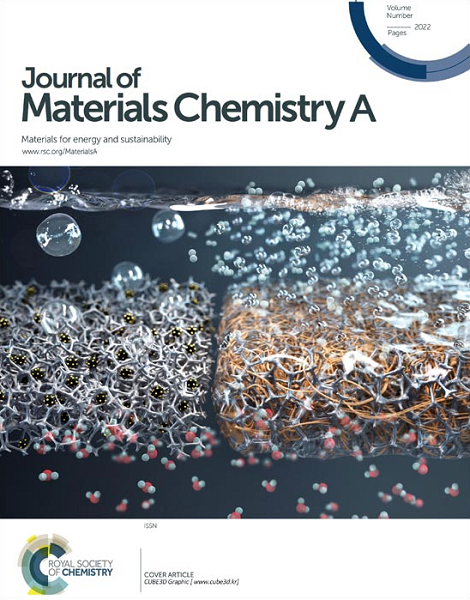Flexible pressure sensors based on electrospun PAN fiber films incorporated with graphene/polypyrrole composites and engineered PDMS microstructures
IF 10.7
2区 材料科学
Q1 CHEMISTRY, PHYSICAL
引用次数: 0
Abstract
Flexible pressure sensors can be conveniently attached to the human body and can be used to effectively track various physiological signals in real time. In this work, flexible pressure sensors were fabricated based on composite fiber materials, exhibiting a microstructured PDMS layer and containing a three-dimensional conductive polyacrylonitrile (PAN) fiber network incorporated with graphene (GR) and polypyrrole (PPy). The working mechanism of the GR/PPy@PAN composite fiber film with microstructured layers in flexible tactile sensors was simulated. The assembled sensor exhibited a wide sensing range (up to 80 kPa), high sensitivity (28.5 k Pa−1), high stability (over 104 cycles), and rapid response/recovery speeds (40 ms/50 ms). These flexible sensors when attached to the human body detected subtle motion signals (e.g., pulse and finger bending) in terms of characteristic current waveforms. In addition, an artificial electronic skin was realized based on an array of 4 × 4 sensors, which gave corresponding responses to tactile stimuli with various magnitudes and coordinates. By analyzing the detected signals from human voice assisted with a machine learning process, speech recognition with high accuracy was realized. Thus, the flexible pressure sensors based on GR/PPy@PAN composite fiber films with microstructured PDMS layers exhibited great potential for multiple applications such as health monitoring, clinical diagnosis, human–machine interaction, and artificial electronic skin.

基于石墨烯/聚吡咯复合材料和工程PDMS微结构的静电纺PAN纤维薄膜的柔性压力传感器
柔性压力传感器可以方便地附着在人体上,用于实时有效地跟踪各种生理信号。在这项工作中,柔性压力传感器是基于复合纤维材料制成的,具有微结构的PDMS层,并含有含有石墨烯(GR)和聚吡咯(PPy)的三维导电聚丙烯腈(PAN)纤维网络。对具有微结构层的GR/PPy@PAN复合纤维薄膜在柔性触觉传感器中的工作机理进行了仿真。组装的传感器具有宽传感范围(高达80kpa),高灵敏度(28.5 kPa−1),高稳定性(超过104个周期)和快速响应/恢复速度(40 ms/50 ms)。当这些柔性传感器附着在人体上时,可以根据特征电流波形检测细微的运动信号(例如,脉冲和手指弯曲)。此外,基于4 × 4传感器阵列实现了一种人造电子皮肤,对不同大小和坐标的触觉刺激做出相应的反应。通过对检测到的人声信号进行分析,辅以机器学习过程,实现了高精度的语音识别。因此,基于GR/PPy@PAN复合纤维薄膜和微结构PDMS层的柔性压力传感器在健康监测、临床诊断、人机交互和人工电子皮肤等方面具有很大的应用潜力。
本文章由计算机程序翻译,如有差异,请以英文原文为准。
求助全文
约1分钟内获得全文
求助全文
来源期刊

Journal of Materials Chemistry A
CHEMISTRY, PHYSICAL-ENERGY & FUELS
CiteScore
19.50
自引率
5.00%
发文量
1892
审稿时长
1.5 months
期刊介绍:
The Journal of Materials Chemistry A, B & C covers a wide range of high-quality studies in the field of materials chemistry, with each section focusing on specific applications of the materials studied. Journal of Materials Chemistry A emphasizes applications in energy and sustainability, including topics such as artificial photosynthesis, batteries, and fuel cells. Journal of Materials Chemistry B focuses on applications in biology and medicine, while Journal of Materials Chemistry C covers applications in optical, magnetic, and electronic devices. Example topic areas within the scope of Journal of Materials Chemistry A include catalysis, green/sustainable materials, sensors, and water treatment, among others.
 求助内容:
求助内容: 应助结果提醒方式:
应助结果提醒方式:


